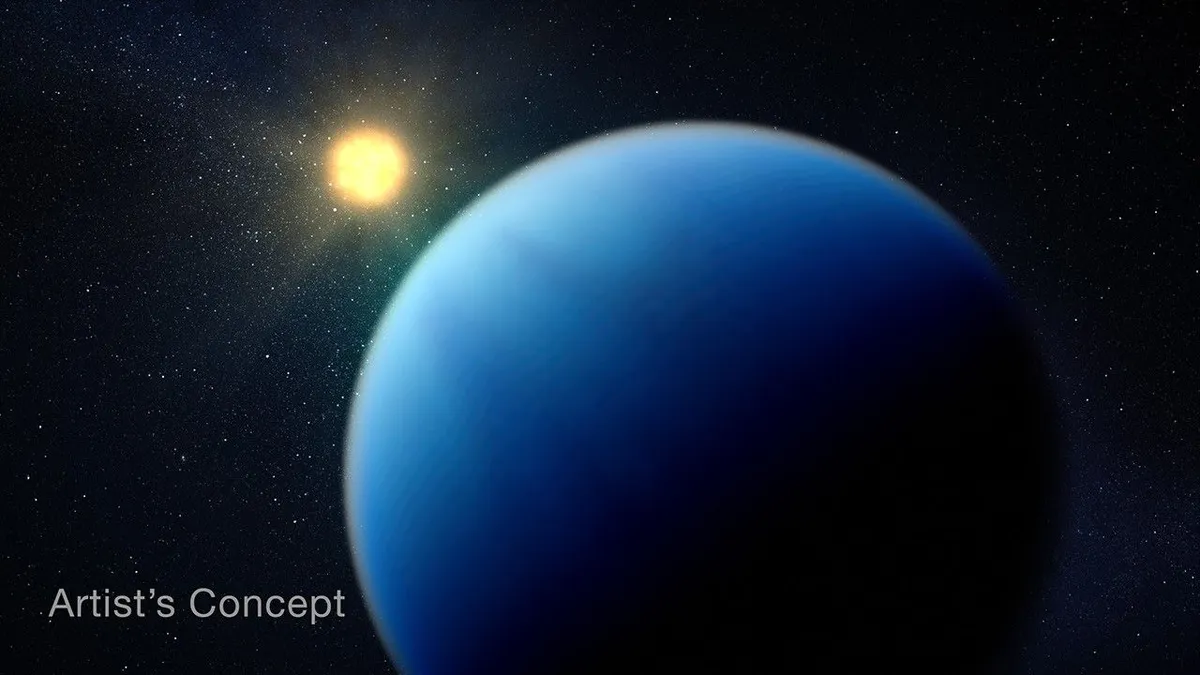
Though they do not orbit around our Sun, sub-Neptunes are the most prevalent type of exoplanet—a planet located outside our solar system—observed in our galaxy. These small, gaseous planets are often enveloped in mystery and haze. Recently, NASA’s James Webb Space Telescope has provided critical insights into the nature of sub-Neptunes, particularly through its observations of exoplanet TOI-421 b. This breakthrough is crucial for scientists aiming to understand these planets in ways that were not previously feasible prior to the telescope's launch.
Eliza Kempton, the principal investigator from the University of Maryland, College Park, expressed her excitement: “I had been waiting my entire career for Webb so that we could meaningfully characterize the atmospheres of these smaller planets.” By studying the atmospheres of sub-Neptunes, researchers aim to gain a deeper understanding of how these planets formed and evolved, particularly why they are absent from our solar system.
The existence of sub-Neptunes was unexpected before their discovery by NASA’s retired Kepler space telescope in the last decade. Now, astronomers are keen to explore their origins and the reasons behind their prevalence. Although sub-Neptunes are several times larger than Earth, they are significantly smaller than gas giants and are typically cooler than hot Jupiters. This makes them more challenging to observe compared to their larger counterparts.
A major finding prior to the launch of the James Webb Space Telescope was that most sub-Neptune atmospheres exhibited flat or featureless transmission spectra. This means that when astronomers observed the spectrum of these planets as they transited in front of their host stars, they only detected a flat-line spectrum, lacking the distinctive spectral features that reveal atmospheric composition. This led scientists to conclude that many sub-Neptunes were likely obscured by extensive clouds or hazes.
Why was TOI-421 b selected for observation? According to Kempton, the hypothesis was that this planet might lack hazes, based on previous data suggesting that planets within a specific temperature range tend to have less atmospheric haze. The threshold temperature is approximately 1,070 degrees Fahrenheit. Below this temperature, scientists believed that complex photochemical reactions between sunlight and methane gas would lead to haze formation. Conversely, hotter planets should theoretically lack methane and, by extension, haze.
TOI-421 b, with a temperature of around 1,340 degrees Fahrenheit, exceeds this presumed threshold. The expectation was that researchers would observe a clear atmosphere—and they did!
Brian Davenport, a Ph.D. candidate at the University of Maryland who conducted the primary data analysis, noted, “We saw spectral features that we attribute to various gases, which allowed us to determine the composition of the atmosphere.” In contrast to previously observed sub-Neptunes, where haze obscured atmospheric details, TOI-421 b’s atmosphere displayed clear molecular signatures, including water vapor, tentative traces of carbon monoxide, and sulfur dioxide. Notably absent were methane and carbon dioxide, leading researchers to infer the presence of significant hydrogen in the planet's atmosphere.
The discovery of a hydrogen-dominated atmosphere was unexpected. Kempton remarked, “We had recently wrapped our minds around the idea that those first few sub-Neptunes observed by Webb had heavy-molecule atmospheres, so that had become our expectation, and then we found the opposite.” This suggests that TOI-421 b may have formed and evolved differently than cooler sub-Neptunes previously studied.
The hydrogen-rich atmosphere is intriguing as it mirrors the composition of TOI-421 b's host star. Kempton explained, “If you just took the same gas that made the host star and placed it in a planet's atmosphere at a cooler temperature, you would achieve a similar combination of gases.” This phenomenon aligns more closely with the formation of giant planets in our solar system, setting TOI-421 b apart from other sub-Neptunes typically observed orbiting smaller, cooler stars called red dwarfs.
The big question remains: is TOI-421 b representative of hot sub-Neptunes orbiting Sun-like stars, or does it reflect the vast diversity of exoplanets? To address this, researchers plan to observe more hot sub-Neptunes to determine if this is an isolated case or indicative of a broader trend. “We've unlocked a new way to look at these sub-Neptunes,” Davenport stated. “These high-temperature planets are amenable to characterization, which could accelerate our understanding of these intriguing celestial bodies.”
The findings regarding TOI-421 b were published on May 5 in the Astrophysical Journal Letters. The James Webb Space Telescope stands as the premier space science observatory, unraveling mysteries within our solar system and beyond, while also probing the origins and structures of the universe. This international program, led by NASA in collaboration with the European Space Agency (ESA) and the Canadian Space Agency (CSA), continues to expand our knowledge of exoplanets and their atmospheres.
For more information about the James Webb Space Telescope and its groundbreaking research on exoplanets, visit: NASA's Webb Page.